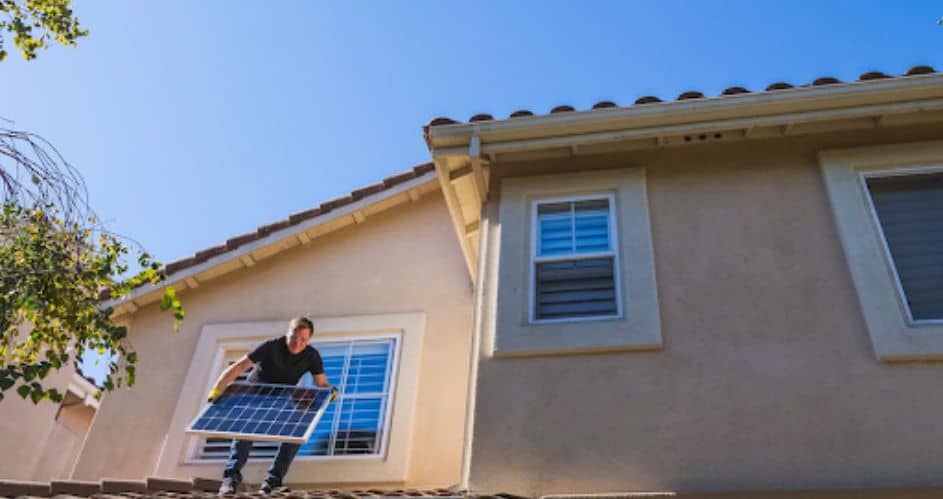
In an era characterized by growing environmental consciousness and an increasing need to conserve energy, homeowners are increasingly resorting to energy-efficient remodeling projects to lessen their carbon footprint and save money on power bills.
As the world grapples with the pressing challenges of climate change, the quest for sustainable living practices has become paramount. Fortunately, there has never been a better time to embrace energy efficiency as technological advancements and innovative solutions pave the way for greener and more eco-conscious homes.
Tips To Help You Make Your Home More Environmentally Friendly.
Energy-Efficient Windows and Doors
Energy-efficient windows and doors are built to keep homes cool in the summer and avoid chilly drafts in the winter. Improved energy efficiency results from their multi-pane glass, low-emissivity coatings, and insulated frames.
Homeowners may have a more comfortable living environment year-round by maintaining a constant indoor temperature.
As a result of the windows and doors’ reduced heat transfer, there is less of a need for continuous heating and cooling, which reduces energy use and utility costs.
Upgrade Your HVAC Filters
Modern windows and doors aid in insulation and temperature regulation, but the HVAC system controls the temperature and interior air quality. Using 16x25x2 HVAC filters that meet high-efficiency standards ensures the system operates at its best, trapping dust, pollen, pet dander, and other airborne particles.
In addition to encouraging a better living environment, cleaner air also increases the lifespan of the HVAC system by reducing dust accumulation and stress on the machinery.
The HVAC filters also keep the system clean and effective, guaranteeing that the conditioned air circulating throughout the house is free of impurities.
Solar Panel Installation
By installing solar panels, you can harness renewable energy in one of the most efficient methods. Solar panels transform solar energy into electricity, which may be used to run appliances, lighting, and heating and cooling systems in your home.
This green energy source not only lessens your dependency on conventional fossil fuels but reduces or even eliminates your need to purchase electricity from the grid, saving on electricity bills. Moreover, governments and local authorities often offer incentives and tax credits, making them financially rewarding investments.
Despite the many benefits, before installing solar panels, it’s important to take your location, the amount of sunlight available, and the upfront cost into account. You may maximize the advantages of this eco-friendly energy source by doing a feasibility analysis and consulting with solar energy specialists.
Energy Efficient Lighting
The benefits of switching to energy-efficient lighting are reduced electricity use, financial savings, and environmental advantages, especially LED bulbs. LED bulbs consume substantially less electricity because they convert a higher proportion of energy into light than typical incandescent bulbs.
Lower electricity bills and immediate energy savings result from this natural efficiency.
The longer lifespan of LED bulbs—up to 25 times greater than incandescent bulbs—is another significant advantage. This longer lifespan lessens the need for frequent replacements, which reduces waste production and lowers overall costs for buying and disposing of bulbs.
Furthermore, compared to incandescent lights, which generate a significant amount of heat when operating, LED bulbs emit very little heat, making them safer and more energy-efficient. As a result of the decreased heat output, cooling expenses during the hotter months when air conditioning is required are also lowered.
Water Saving Fixtures
Reducing water consumption is a vital aspect of creating an energy-efficient and eco-friendly home. Installing low-flow toilets, showerheads, and faucets is easy to save water without sacrificing functionality. By reducing water flow, these fixtures not only directly preserve water but also indirectly reduce energy use.
Fixing leaks in plumbing appliances and fixtures is also essential for conserving water and energy. Fixing leaks lowers the energy required to treat and pump water by preventing waste.
The use of water is also decreased by switching to water-efficient equipment like dishwashers and washing machines, which results in less energy being used during operation.
Programmable Thermostats
Installing a programmable thermostat is a straightforward and budget-friendly method to optimize your home’s heating and cooling system.
The capacity to design individualized heating and cooling schedules is their main benefit, as homeowners can adjust different temperatures when the house is occupied, empty, or when people are sleeping. Programmable thermostats reduce energy use by regulating the temperature automatically per your regular activities.
With the flexibility and simplicity of programmable thermostats, you can optimize energy use while creating a cozy indoor environment. For example, you can program the thermostat to start heating or cooling before you get home, ensuring a cozy environment without having to run the system all day.
Energy Efficient Appliances
Switching to Energy Star-certified appliances is a highly efficient way to reduce energy use and save a lot of money over time. Appliances that have received this accreditation from The U.S.
Environmental Protection Agency (EPA) and the U.S. Department of Energy (DOE) adhere to stringent energy efficiency standards, guaranteeing that they consume less energy while providing optimal performance. Older appliances use more energy than is necessary and tend to be large energy hogs.
The most often replaced home appliances include air conditioners, refrigerators, washing machines, and dishwashers. For instance, Energy Star-certified refrigerators use cutting-edge technologies to stabilize temperatures and reduce energy waste, reducing electricity use.
High-efficiency dishwashers utilize cutting-edge cleaning techniques to save water and electricity, while energy-efficient washing machines use less water and energy during each cycle. These appliances help with water conservation initiatives in addition to lowering utility costs.
Conclusion
Making energy-efficient house improvements results in a smaller carbon footprint, long-term financial benefits, and a more comfortable home environment.
These seven suggestions are a wonderful place to start if you want to make your home more environmentally friendly, from using solar electricity to replacing windows, doors, and appliances. You may significantly contribute to creating a brighter future for future generations by making efforts toward sustainable living.